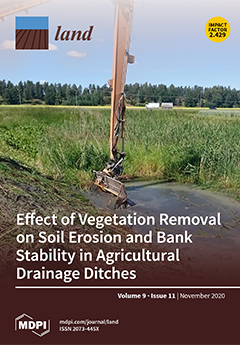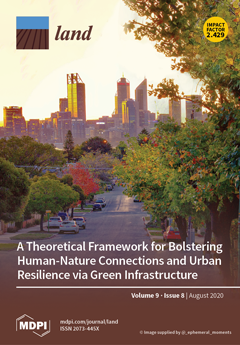Prior research has documented environmental and economic benefits of green stormwater infrastructure (GSI); literature on GSI social benefits is also becoming more prevalent among scholars around the world. This paper aims to understand whether GSI projects are considered as assets to urban…
The near elimination of inland salt marshes in Central Europe occurred throughout the 19th and 20th centuries, and the currently remaining marshes exist in a degraded condition. This work examines the impact of groundwater level on the growth of plants from a seed bank obtained from a degraded…
With 15–20% of Indonesian oil palms located, without a legal basis and permits, within the forest zone (‘Kawasan hutan’), international concerns regarding deforestation affect the totality of Indonesian palm oil export. ‘Forest zone oil palm’ (FZ-OP) is a substantive issue that requires analysis…
Forests cover about 40 % of the European Union (EU), providing a wide spectrum of invaluable ecosystem services to more than half a billion people. In order to protect and harness this crucial asset, EU policies are advancing multifunctional management. This study lays a basis for such an effort…
The landscape context (i.e., anthropogenic setting) of forest change partly determines the social-ecological outcomes of the change. Furthermore, forest change occurs within, is constrained by, and contributes to a dynamic landscape context. We illustrate how information about local landscape…
This study examined knowledge mobilization and collaboration practices of practitioners in a Canadian provincial park agency, BC Parks. Data was collected through four focus groups, an on line survey (N = 125), and a follow up workshop. Results showed that the most important information sources…
Although the way in which vegetation phenology mediates the feedback of vegetation to climate systems is now well understood, the magnitude of these changes is still unknown. A thorough understanding of how the recent shift in phenology may impact on, for example, land surface temperature (LST)…
Understanding future land-use related water demand is important for planners and resource managers in identifying potential shortages and crafting mitigation strategies. This is especially the case for regions dependent on limited local groundwater supplies. For the groundwater dependent Central…
Inclusive knowledge systems that engage local perspectives and social and natural sciences are difficult to generate and infuse into decision-making processes but are critical for conservation planning. This paper explores local tacit knowledge application to identify wildlife locations,…
Monitoring of irrigated land cover is important for both resource managers and farmers. An operational approach is presented to use the satellite-derived surface temperature and vegetation cover in order to distinguish between irrigated and non-irrigated land. Using an iterative thresholding…
Based on the background of the change in the urban–rural relationship in Guangdong Province, this paper constructs an analysis framework of urban and rural coordination development. Using the data of 19 administrative units above prefecture level in Guangdong Province, this paper studies the…
Historic urban landscapes (HULs) are composed of layers of history and memories that are embedded in physical monuments, buildings, and memorials. Physical built fabric stores both personal and cultural memory through long association with communities. Rapid changes due to demolition and…





